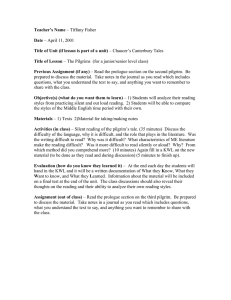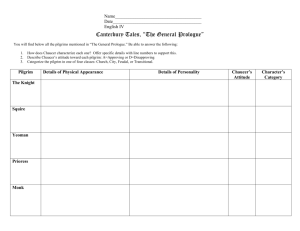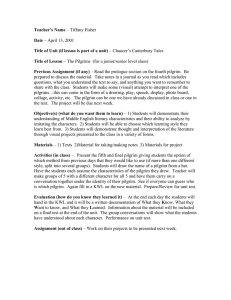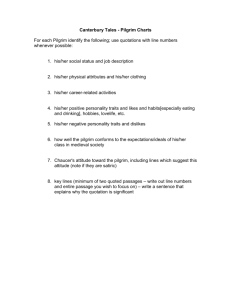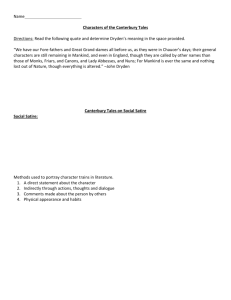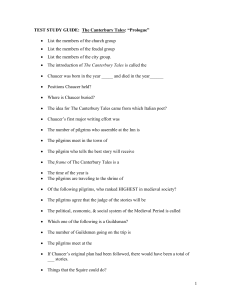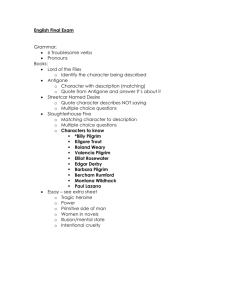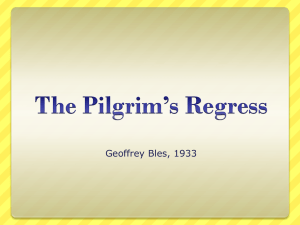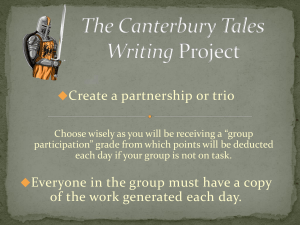Canterbury Tales Prologue
advertisement
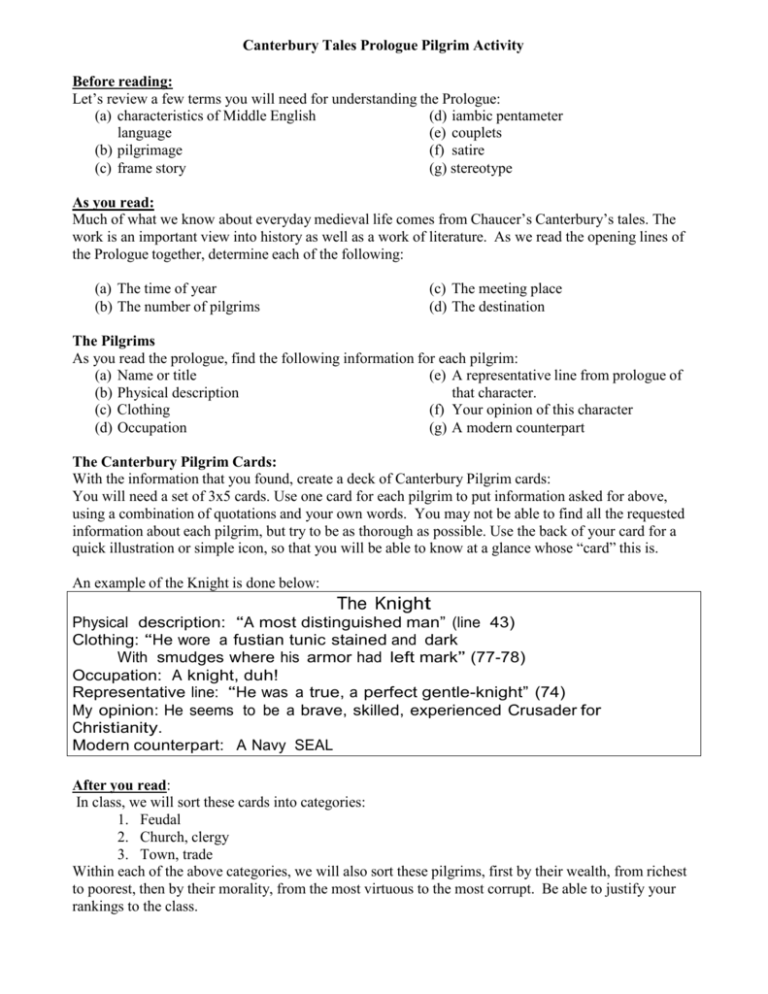
Canterbury Tales Prologue Pilgrim Activity Before reading: Let’s review a few terms you will need for understanding the Prologue: (a) characteristics of Middle English (d) iambic pentameter language (e) couplets (b) pilgrimage (f) satire (c) frame story (g) stereotype As you read: Much of what we know about everyday medieval life comes from Chaucer’s Canterbury’s tales. The work is an important view into history as well as a work of literature. As we read the opening lines of the Prologue together, determine each of the following: (a) The time of year (b) The number of pilgrims (c) The meeting place (d) The destination The Pilgrims As you read the prologue, find the following information for each pilgrim: (a) Name or title (e) A representative line from prologue of (b) Physical description that character. (c) Clothing (f) Your opinion of this character (d) Occupation (g) A modern counterpart The Canterbury Pilgrim Cards: With the information that you found, create a deck of Canterbury Pilgrim cards: You will need a set of 3x5 cards. Use one card for each pilgrim to put information asked for above, using a combination of quotations and your own words. You may not be able to find all the requested information about each pilgrim, but try to be as thorough as possible. Use the back of your card for a quick illustration or simple icon, so that you will be able to know at a glance whose “card” this is. An example of the Knight is done below: The Knight Physical description: “A most distinguished man” (line 43) Clothing: “He wore a fustian tunic stained and dark With smudges where his armor had left mark” (77-78) Occupation: A knight, duh! Representative line: “He was a true, a perfect gentle-knight” (74) My opinion: He seems to be a brave, skilled, experienced Crusader for Christianity. Modern counterpart: A Navy SEAL After you read: In class, we will sort these cards into categories: 1. Feudal 2. Church, clergy 3. Town, trade Within each of the above categories, we will also sort these pilgrims, first by their wealth, from richest to poorest, then by their morality, from the most virtuous to the most corrupt. Be able to justify your rankings to the class.
